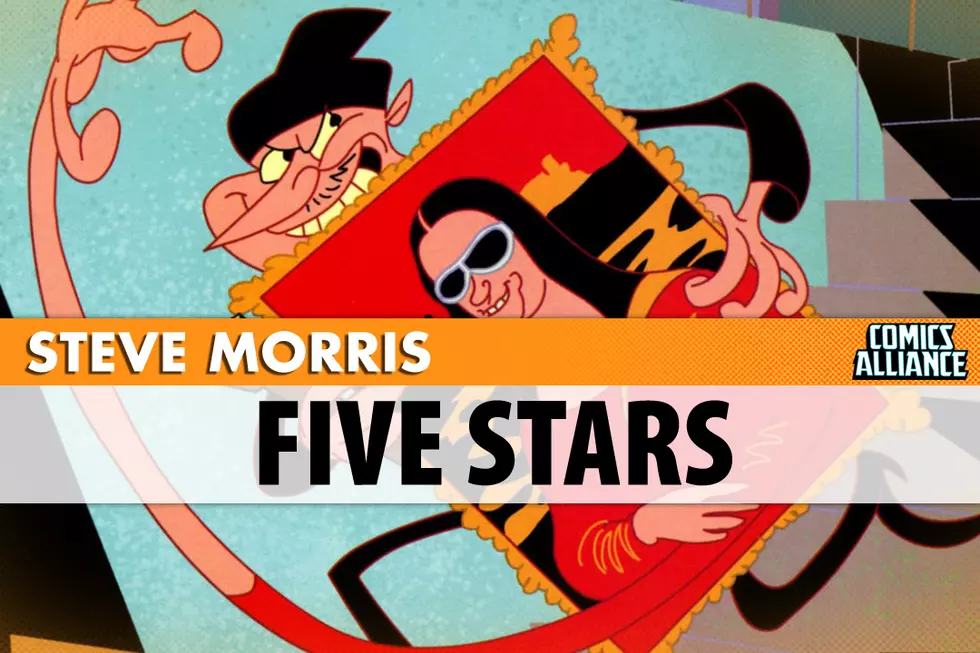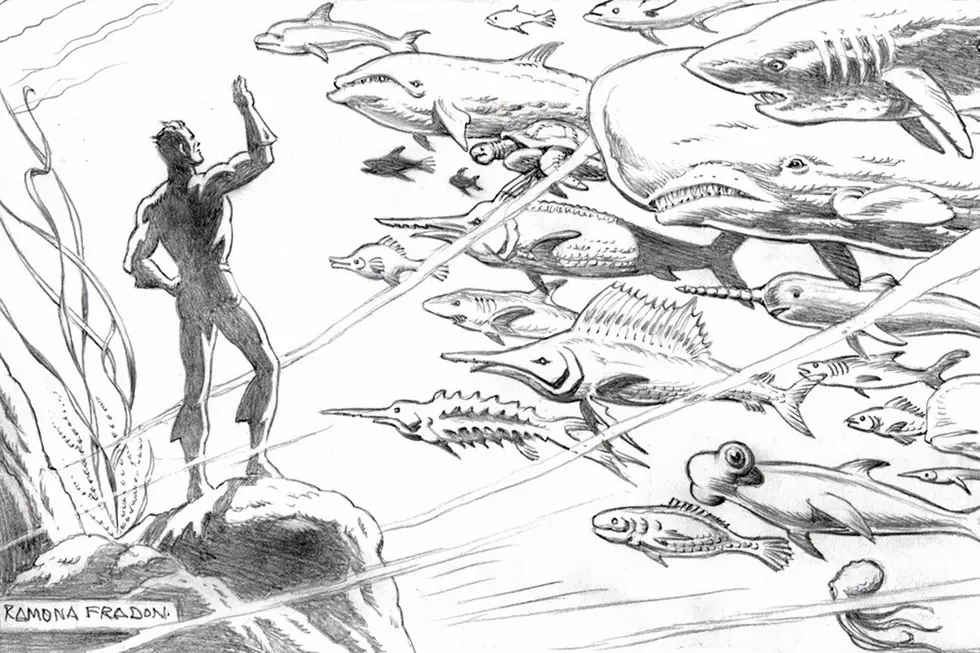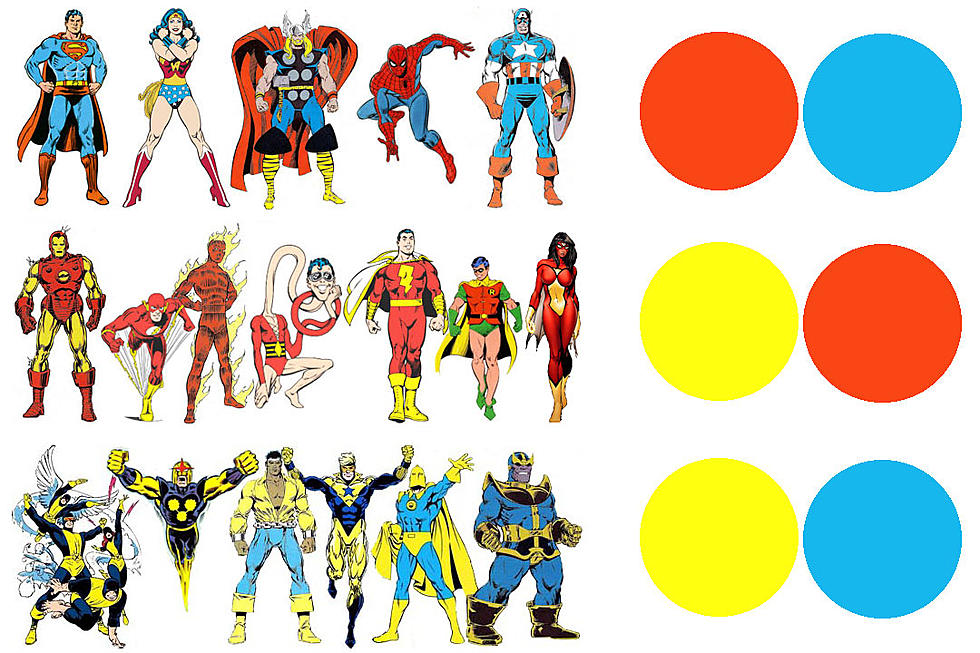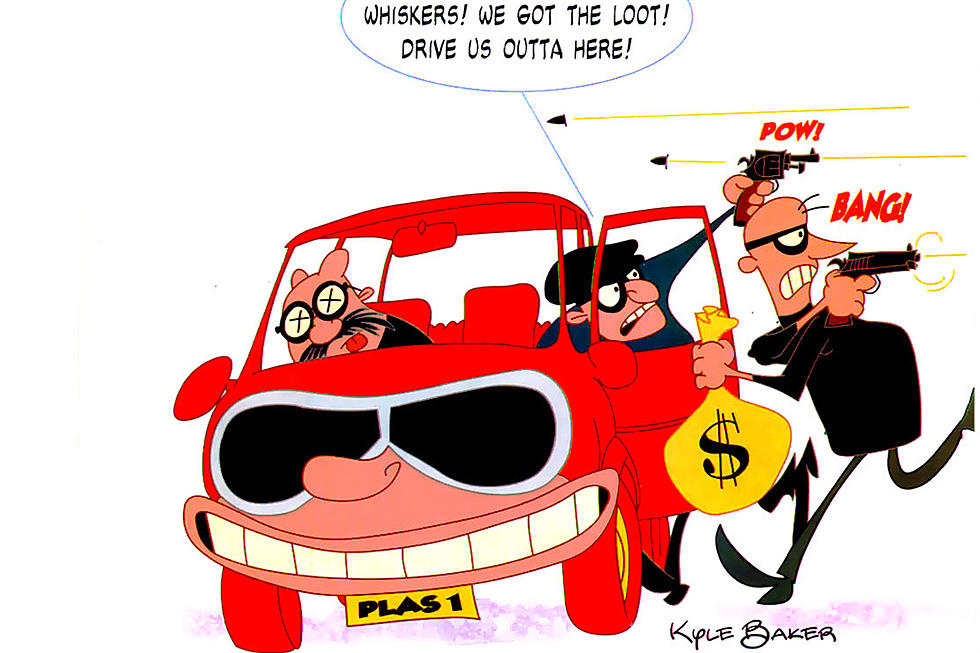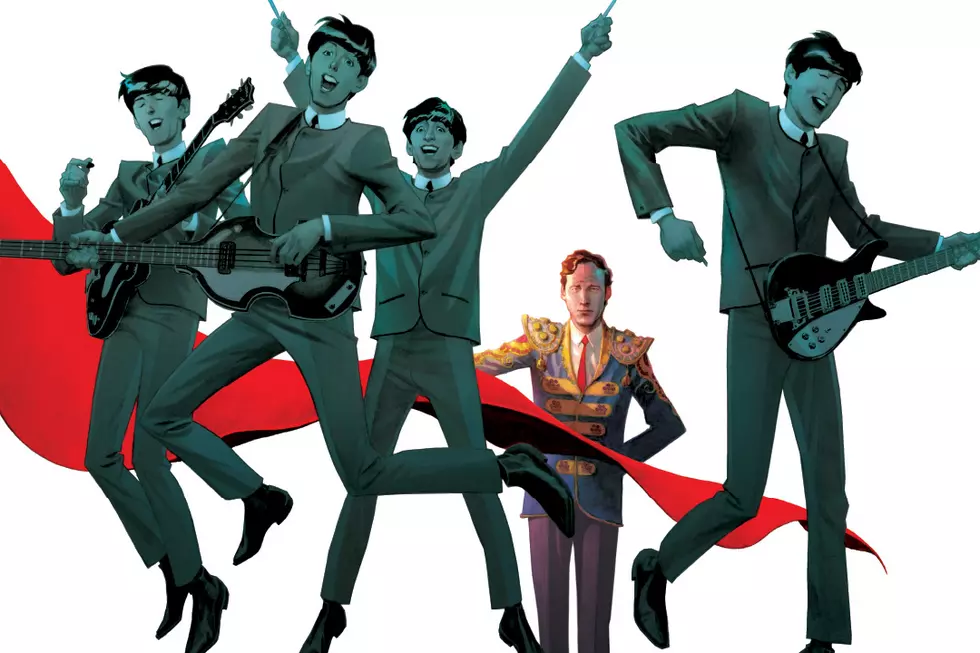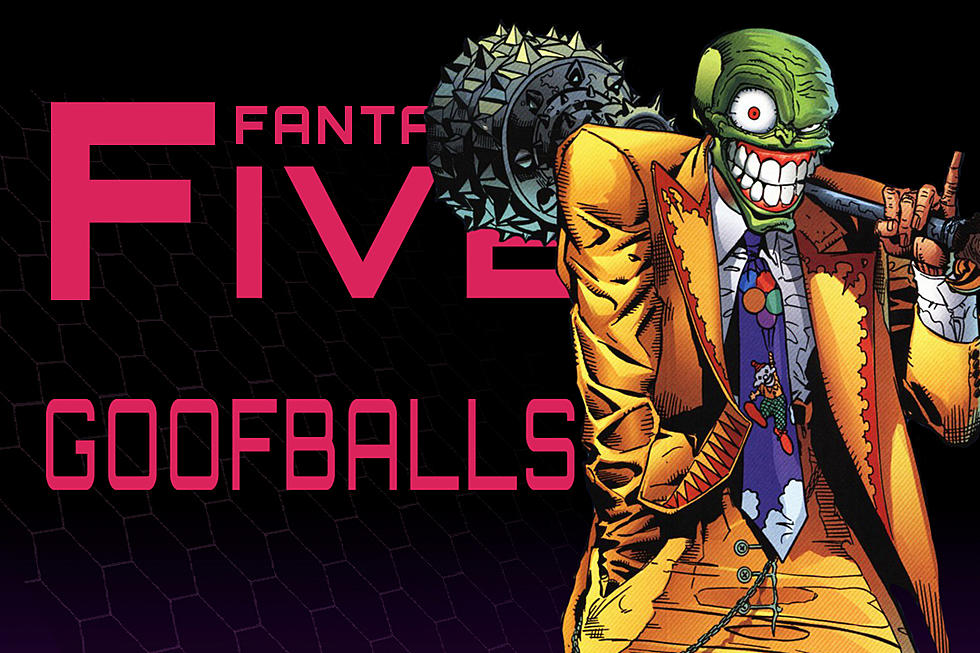
Stretching the Form: Celebrating Plastic Man
May 14, 1941 saw the release of a new anthology called Police Comics, from a publisher known as Quality Comics. It starred a guy in a sheer pink blouse named Firebrand, but it was one of the backup features that would become Quality's biggest hit. You already read the headline, so you know I'm talking about Plastic Man. The book also introduced Phantom Lady, who would later be known for the way her costume was drawn, and the Human Bomb, who stuck around for a long time by hanging out with cooler heroes.
But Plastic Man was in a league of his own. From that first story, which tells his origin, the work of writer/artist Jack Cole elevated Plastic Man above almost everything that was happening in comics at the time. Even at Quality, which had uncommonly good art for the era, Cole's work stood out like it was from the future.
Eel O'Brien was a gangster who was shot during a job, and a whole barrel of acid poured over him and into his wound. Later the acid would be retconned into "a mysterious chemical," but in Police Comics #1, it's acid. Anyway, his gang leaves him to die or be arrested, but he escapes and is nursed back to health by a friendly monk. When the cops come looking for him, the monk turns them away. This makes O'Brien realize criminals are bad people, and good people are the ones he should be emulating. Conveniently, that acid has turned his body into super-malleable rubber. It's then that he changes his appearance and his way of life to become Plastic Man, a superhero who can shape himself into anything.
Unlike most superheroes who act independently, Plastic Man soon joined the police force and then moved to the FBI. Perhaps that was to make him a fit for the title, but it actually works really well. Plas is a such a weirdo that it's more believable for him to fight crime when he has a boss to tell him to go fight some crime. Plastic Man also has a sidekick named Woozy Winks, a pure comedy character who makes Plas seem more heroic by comparison.
Not that Plastic Man doesn't have a moral compass after his reformation. He's just, as the kids might say, random. I don't think it was every established that the chemical that transformed him affected his brain chemistry, but it would make a lot of sense if it had. Like his body, Plastic Man's mind doesn't seem constrained to human dimensions. It's more malleable and less containable. Which is why he has a reputation for being a joker. He never seems to take things seriously, and because he's basically indestructible, that works out pretty well for him.
Plastic Man got his own comic in the 1940s, as well as continuing to star in Police. He was a star well into the 1950s, at which point Quality Comics went out of business, and its characters were purchased by DC. Plastic Man became a part of the DC Universe, appearing on Super-Friends (as well as his own cartoon) in the '70s, and joining the Justice League during Grant Morrison's run in the '90s. From 2004 to 2006, he starred in a much-celebrated series by Kyle Baker, which won five Eisners and a Harvey Award.
Plastic Man's influence on other heroes is often discussed in terms of other guys who stretch. And while it's true that Elongated Man and Reed Richards owe a little something to Eel O'Brien, that's a pretty surface understanding of who Plastic Man is and why he's important to comics history. As our own Chris Sims once pointed out, the most popular character today who owes his existence to Plastic Man is Deadpool. And not just because he's a criminal who was made in destructible in a pretty messed up way and wears a red and black suit. The bigger thing is that Plastic Man was the original hero who was silly and a little unhinged. He made jokes in battle and didn't take things seriously because he knew nothing could hurt him.
Of course those classic Jack Cole comic books pioneered not just the nihilistically anarchistic protagonist, but also the very idea of fully integrating superheroes and comedy. Red Tornado came first, but she was more of a humor character making fun of superheroes. Plastic Man is firmly both. A comedy protagonist and a legit (very powerful) superhero. So you could just as easily say that Plastic Man paved the way for books like Ryan North and Erica Henderson's The Unbeatable Squirrel Girl.
Actually, I'm going to stop beating around the bush. Comics as we know them today owe a debt to Jack Cole's Plastic Man. All comics. We don't know what the medium would look like if Plastic Man had never been, but there's no way on Earth it would look the same. Cole's comics are like nothing that came before them, and few things that have come since, and I absolutely recommend you check them out if you never have. And because Quality's output has fallen into the public domain, you can read many of them legally for free over at the Digital Comics Museum (who do great work, by the way, so consider supporting them while you're there).
I liked to imagine Plastic Man might get a movie one day, but then when I try to picture what that would be like, I realize that everything that makes Plastic Man truly great is pretty tied to the way space exists on the comics page (and the way Jack Cole taught artists to use that space). Also, it's hard to imagine there tone could ever be achieved, even in this post-Deadpool era. But if it brought more attention to these great comics, that at least would be worth it.
Plastic Man hasn't gotten to do much since the New 52, outside of a few Justice League appearances, but he's still around and fondly remembered. It takes a special sort of creator (like Kyle Baker) to really get a handle on him, but I'm confident that sooner or later old Eel will stretch his way back into the spotlight, and remind the world how great he is, and how important.
More From ComicsAlliance

![‘Justice League Action’ Forges Its Own Path, Delivers On The Action [Review]](http://townsquare.media/site/622/files/2016/12/action_featured.jpg?w=980&q=75)
